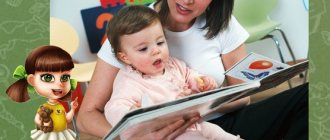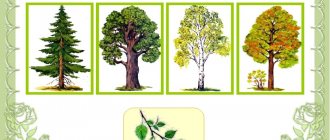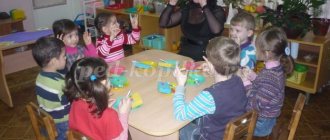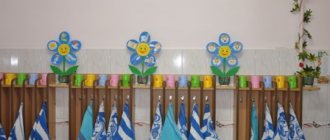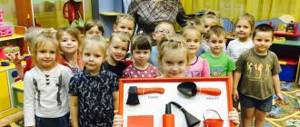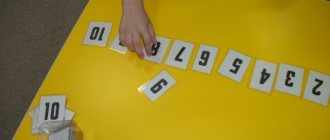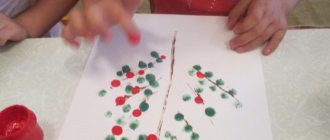Felt apple - pattern and job description
Very soon you, too, may have a similar felt apple, because today I have prepared for you not only a video, but also a pattern. Having sewn it, you can decide for yourself what to do with it and who to give it to, and I will be happy to look at the results of your work. From the outside.
As usual, we'll need a list of materials, a few tools for working with felt, and some free time.
List of materials and tools
- felt;
- holofiber;
- needle;
- threads;
- decorative cord;
- artificial leaf.
the felt in a rich red color. However, I won't be offended if you prefer yellow or green. Such apples also exist and they turn out no less tasty.
threads , like LL No. 45. If there are none, then take those that are, but in two additions.
As for the decorative cord , I chose a dark brown color of 2 mm in diameter - only 20-30 cm. This cord is ideal for making a stalk.
In addition, we will need scissors, chalk for cutting parts, a crochet hook No. 4.5 and a pattern.
Let's get started
In principle, I recorded all the main points on making an apple for you on camera, so after downloading and printing the file with the pattern, you can immediately proceed to watch the video. The only thing I would like to draw your attention to is that do not sew the pattern pieces together so that there is not the slightest distance left at the top and bottom. Let there be a hole with a diameter of 2-3 mm. We'll need it.
Drawing techniques and techniques used in the middle group
Drawing contributes to the formation of an aesthetic perception of the world, awakens creativity, stimulates the development of fine motor skills, imagination and fantasy, artistic and spatial thinking, sensory perception and intellectual abilities of the child.
Classic techniques
- Drawing with a simple pencil.
- Drawing with colored pencils.
- Drawing with wax crayons.
- Drawing with felt-tip pens.
- Combined method (colored pencils and watercolors, felt-tip pens or wax crayons).
- Painting with a brush using gouache - the distinctive property of this material is its opacity, which allows you to overlap layers with a new color.
- Painting with a brush using watercolors. Children are taught the skills of regulating the paint range, selecting colors, and obtaining the desired shades by mixing primary colors.
Children's works in classical techniques (photo gallery)
“Fox” – drawing with watercolors
“Sister Fox” – drawing with colored pencils
“Winter Forest” – drawing with watercolors
“Tabby cat” – drawing with watercolors “Handsome red-haired man” – drawing with wax crayons
“Sly little fox” - painting with gouache paints
“Crocodile” – drawing with gouache paints “Kitten” – drawing with watercolors “Pet” – drawing with colored pencils
Unconventional techniques
- Vertical poke with gouache using a hard semi-dry brush without using water to obtain an external effect of three-dimensionality of the image (fluffiness, relief).
- Finger painting - initially children master the techniques of dot, stroke and spiral.
- Palm painting - based on prints of children's palms and additional drawing of contours and details.
- Subject and landscape monotype is a method of mirror transfer of an image from one part of a sheet folded in half to another part.
- Splashing is the effect of scattered drops, paint is drawn onto a wide brush or brush, then shaken onto paper using a finger or stick.
- Crumpled paper drawing - printing an image using a paper stamp crumpled from a piece of paper.
- Drawing on wet paper is a blurry, hazy image that is applied to a pre-moistened sheet of paper.
- Blotography is the process of blowing droplets of paint through a tube and creating an image from a random colorful design.
- Drawing using rock salt, semolina, colored sand.
- Threadography is drawing with threads by laying out the outline of an image and filling the silhouette with threads.
- Drawing with a candle - an image of an animal is applied with a wax candle on white paper using a stencil, then painted over with a top layer of watercolor in one or more color shades.
- Scratching is scratching the outlines of a design onto a surface primed with wax or paint.
Children's works using non-traditional techniques (photo gallery)
“The giraffe has spots” - drawing using the palm technique
“Bear and Northern Lights” - drawing on a wet sheet using salt and appliqué elements
“Elephant” – drawing using the nitcography technique “funny kitten” – drawing using the nitcography technique
“Cheerful lamb” - drawing with colored sand
“Camel” – a drawing made using the poking method “Giraffe” – a drawing made using the poking method
“Brother bunnies” - a drawing made using the poking method
“Lion” - a drawing made using the poking method
“Polar Bear” - drawing with semolina
“Bear in the North” - stencil drawing with a wax candle
“Forest Dwellers” – drawing using the spray technique
“Jungle” - a drawing using the stencil technique with appliqué elements
“Seal and Northern Lights” - drawing using monotype technique with elements of appliqué “Forest Dwellers” – drawing using spray technique “King of Beasts” – drawing with salt
“Hedgehog with a leaf” - drawing with crumpled paper
“Teddy bear” - drawing with crumpled paper
Scratching a drawing using the scratch technique “Mischievous cat” - drawing using the scratch technique
“White horse” - drawing with cotton swabs
Drawing techniques
Pupils of the middle group master and improve techniques for working with pencils, felt-tip pens, wax crayons and a brush. Working with these tools helps strengthen the muscles of the hand, develop fine motor skills and coordination of movements. Using the technique of adjusting the pressure will allow you to obtain different color intensities and achieve the effect of transition from one shade to another.
- The line is the main method for sketching, which is taught to four-year-old children. A straight, arched, wavy line depicts a contour, conveying the nature of the object’s shape, its size and proportions.
- Hatching is a fairly simple, but expressive and effective way of conveying the character of a character (lightness, heaviness, flexibility, plasticity, etc.) and the texture of an object. Types of shading:
- Chaotic - strokes are laid in a free direction, then with the help of additional drawing of the contour, the outlines of the object are formed.
- Vertical - dense strokes are applied in a vertical direction.
- Diagonal - strokes are placed at an angle.
- Horizontal is a rather difficult technique to perform, since it requires the child to change the usual position of the hand during the drawing process.
- Shape-building is a technically complex and time-consuming way of conveying the shape of an object, for example, a ball, a cloud or a tree crown.
- Shading helps to achieve different degrees of color saturation depending on the degree of pressure of the pencil. Drawing an outline requires more pressure than painting the silhouette of an object or creating a background pattern.
- Dot, rhythmic stroke, brush stroke using the technique of painting with watercolors and gouache paints.
Large compositions, which consist of several characters and objects, are usually created collectively. The preparatory stage, during which the background is tinted, individual figures are drawn, details are worked out, is carried out in small subgroups or individually, and then the children together make a picture on whatman paper, gluing the silhouettes they have prepared, simultaneously developing spatial thinking abilities, gaining experience in coordinated actions. In the process of collective creativity, children complete a task formulated by the teacher, developing social skills of mutual understanding and camaraderie.
Children glue the elements of the composition
It is important to develop in children an understanding of the correct sequence of stages of work to create a collective composition or collage:
- Tint the background.
- Draw background objects (trees, sun, clouds, houses, flowers, etc.).
- Draw or place cut out animal figures.
Collective works (photo gallery)
“Animals of hot countries” - a collective drawing using the palm technique
“Wild and Domestic Animals” - group work with appliqué elements
“Polar bears” - painting with watercolors, semolina with applique elements
“Forest Dwellers” is a collective work using a combined technique (drawing with colored pencils, felt-tip pens, blotography, spray painting) with elements of appliqué
“Fauna of Africa” - a collective work with appliqué elements
